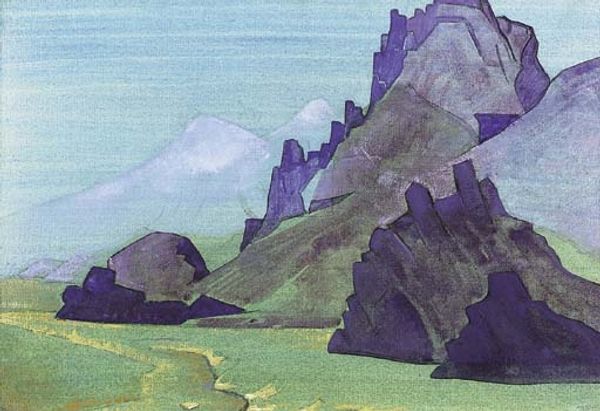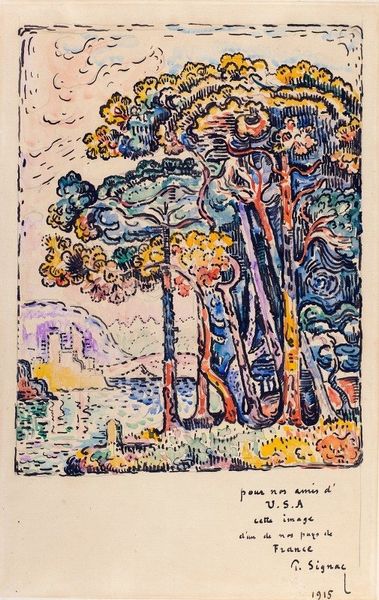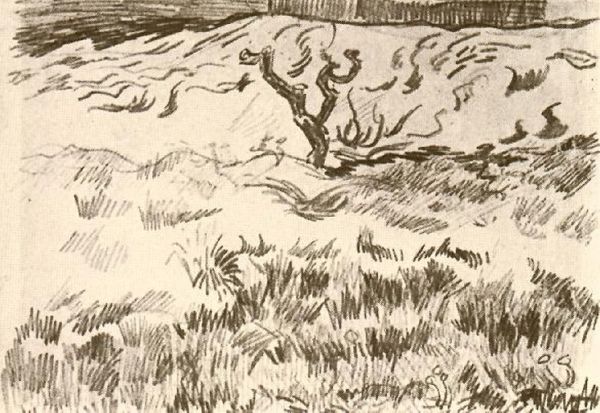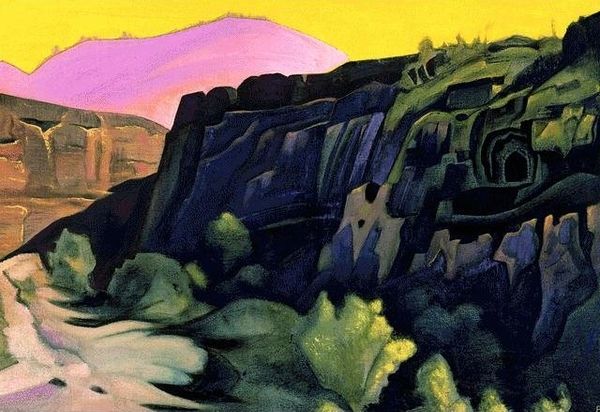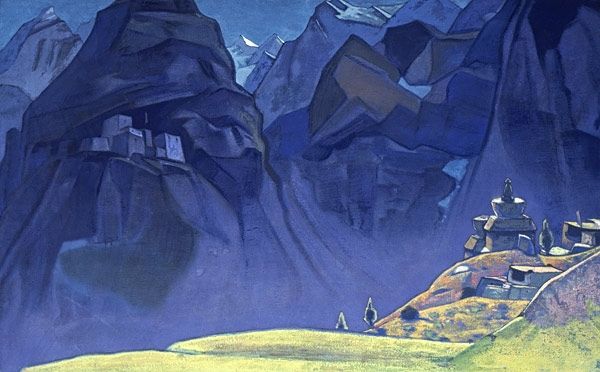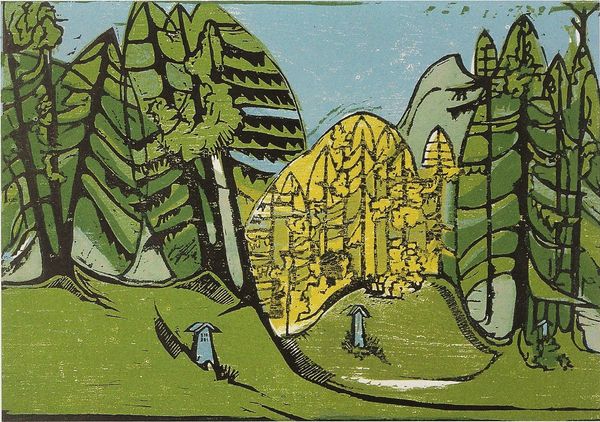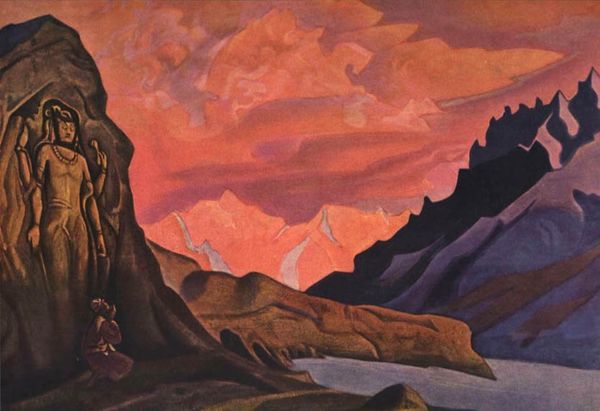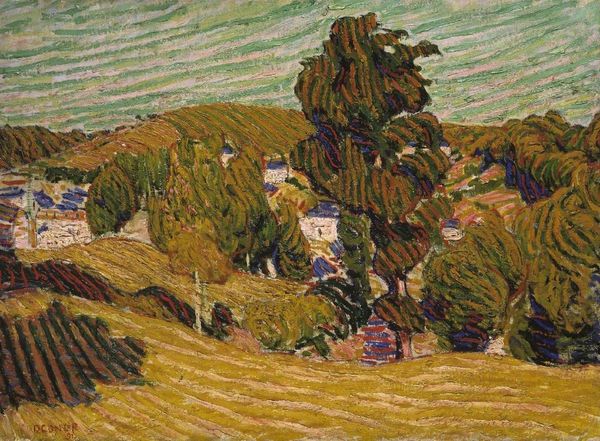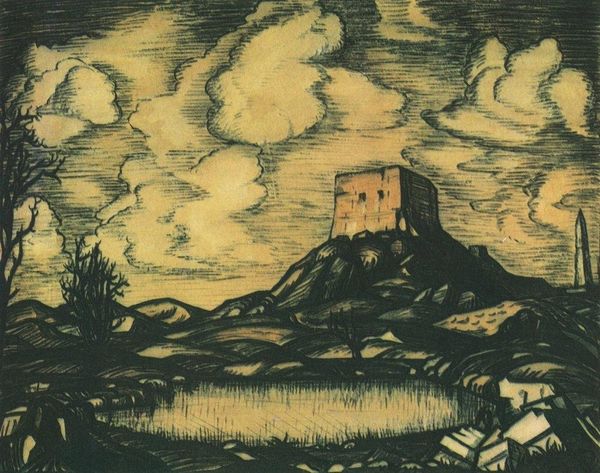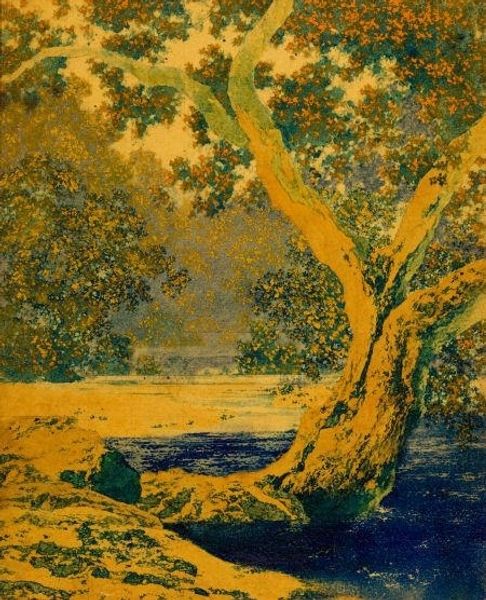
painting, oil-paint
#
tree
#
cliff
#
painting
#
oil-paint
#
landscape
#
rock
#
forest
#
folk-art
#
naive art
#
water
#
symbolism
#
painting art
Copyright: Public domain
Curator: Let's take a look at Nicholas Roerich's "Kiss the Earth," painted in 1912. I'm struck immediately by the simplified forms and almost graphic quality. The palette, that earthy yellow and contrasting purple of the water...it's really quite bold. Editor: It does feel immediately symbolic, doesn’t it? The colours have this weighty feeling and a simplified narrative, but there's something profoundly uneasy about it too. Almost as if something natural and restorative is at odds with itself, you can even see hints of art-deco that seem out of place in such a bucolic setting. Curator: Well, Roerich was deeply interested in the Symbolist movement and also in folk art traditions. You see it in the flattening of the perspective, the clear outlines, almost like an icon. The execution feels so tied to its creation. Editor: Exactly, I see it like this, Roerich himself came from privilege, so to idealize folk art traditions, it poses the question of by whom and for whom is that kind of tradition accessible? Its creation may be folksy but how is the context for his painting a reflection on his colonialist ideas? It makes you wonder. Curator: The layering and texture achieved with oil paint here is surprisingly tactile given the overall simplification. The strokes themselves contribute to this sense of connection to the land that the title suggests. Look at the way he's built up the impasto on the tree trunk. Editor: Roerich, after all, positioned himself as something of a cultural ambassador, right? This connects very deeply with Russian identity and nationalistic expression. This image, simplified or “folksy” as it may be, is also reinforcing a certain cultural identity. Its simplification normalizes this kind of symbolism and promotes a romantic vision that could mask a far less charming socio-political reality. Curator: I think I'm always drawn to the sincerity in it, the attempt to connect with something primal. It's naive in the best possible way, as in not trying to be something that it isn't. The piece is quite intriguing. Editor: I agree there is certainly intrigue to be found in the piece; however, if anything it seems as if his identity creates a paradox in something that’s supposedly ‘of the land,’ as one with the folk. There's just too much gloss, too much pretense to it to accept its claims to folk identity wholesale.
Comments
No comments
Be the first to comment and join the conversation on the ultimate creative platform.
